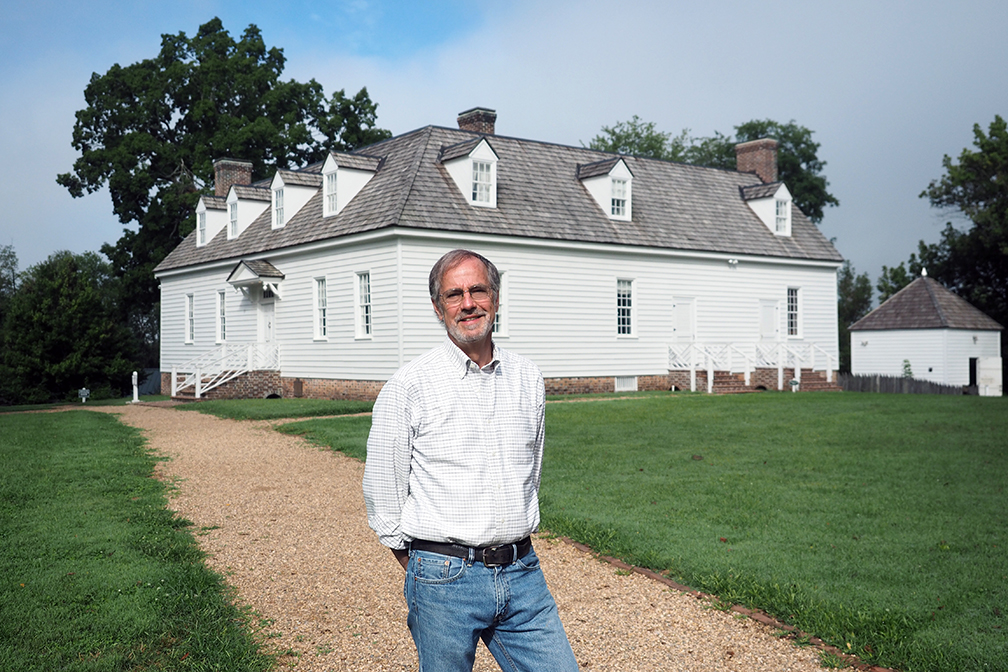Department of History Becomes Co-Publisher of The Smithfield Review
September 12, 2018

Smithfield Plantation is many things — a treasured property commemorating the beginnings of Virginia Tech, a landmark rich in the history of Southwest Virginia, a museum dedicated to portraying late-18th-century life in the region. But its impact is even greater. It fuels inspiration through its namesake journal, The Smithfield Review, now co-published by the Virginia Tech Department of History and the Smithfield-Preston Foundation.
Twenty years ago, Virginia Tech community members from four disciplines came together to form the first editorial board of a new history journal. Charles Taylor from the Department of Political Science and the late Charles Modlin from the Department of English were both faculty members in what is now the College of Liberal Arts and Human Sciences. The late Lon Savage, director of the university’s Scholarly Communications Project, which established the online publication of academic journals, was a third member of the team.
The fourth member emerged from an unexpected field: mathematics. It was Hugh Campbell, now a professor emeritus of mathematics in the College of Science, in fact, who originated the idea of a journal highlighting the history of the region west of the Blue Ridge Mountains. He served as editor until 2016.
Together the four published the periodical through the Smithfield-Preston Foundation, which dedicates itself to interpreting the history of the American Colonial to Civil War period through the lens of the Preston family, the original owners of the Smithfield Plantation in Blacksburg. The manor house, started in 1772 and occupied in 1774, served as the final home of Colonel William Preston, who immigrated to the Virginia colony from Ireland in 1739. He named the property in honor of his wife, Susanna Smith.
The Prestons’ sons played key roles in founding and running the Olin and Preston Institute and then the Preston and Olin Institute, which became, in 1872, the Virginia Agricultural and Mechanical College and eventually turned into what is now Virginia Tech. Some 200 acres of the Smithfield farmlands formed most of the original campus.
And the university, through its Department of History, once a strong advocate for The Smithfield Review, now finds itself in a new role.
“The history department has been a proud supporter of The Smithfield Review since it began publication more than 20 years ago,” said Mark Barrow, chair of the Department of History. “We’re delighted to begin serving as co-publisher of this important venue for recovering this region’s fascinating history.”
Together with the Smithfield-Preston Foundation, the publication is now available to a larger audience, said William Foster, president of the foundation’s board of directors. The University Libraries at Virginia Tech added the journal to its electronic publishing services last year.
Now serving as editor of the publication is Clara Cox, retired director of university publications at Virginia Tech. Cox, who earned her master’s degree in English at Virginia Tech in 1984, co-edited The Smithfield Review in 2017 with fellow editorial board member Sharon Watkins, a retired adjunct professor of history.
Taylor, now professor emeritus, and Campbell continue their long-time service on the editorial board. Watkins also serves on the board, and Aaron Purcell, director of special collections at University Libraries, joined the board this year.
In addition to supporting the journal financially, the history department has long provided a historical adviser. Until recently, Peter Wallenstein, a history professor, provided this service. Daniel Thorp, an associate professor of history and the associate dean of undergraduate academic affairs for the College of Liberal Arts and Human Sciences, now fills this role and serves on the editorial board as well.
“The Smithfield Review has gone through several significant changes in the past couple of years, changes that we feel make it stronger than ever,” said Foster, a 1966 graduate in business administration from Virginia Tech and a former member of Virginia Tech’s Board of Visitors. “With this new boost from the Department of History, we anticipate both a wider audience and a broader pool of people interested in submitting articles.”
Written by Leslie King





